This post contains affiliate links for which I may make a small commission to help keep the site running. You will not be charged extra for these items had you not clicked the links. Thank you for your help to keep the site running!
If you’re wondering how to use London buses or hoping for some expert tips, you’ve come to the right place!
There are two main thoughts that go through most visitor’s minds surrounding London buses.
The first is: oh my God, they actually are double decker! This is real life! This isn’t just in the movies or for tourists!
The second is: but how do I get on one without getting lost?
People are usually more hesitant to use a London bus than to hop on the London Underground.
I think this comes down to our natural hesitation when exploring a new city.

With the tube, it’s much easier to navigate your way back somewhere if you get lost, because you can’t get TOO lost.
If you end up at a stop you didn’t expect, you get off, don’t exit the station, look at the tube map or ask a member of staff, and then get back on in the right direction.
With a bus, it feels much more intimidating, because what if you get on one going in the wrong direction in the middle of nowhere with no idea how to orient yourself, or your phone dies so you don’t have a map anymore.
The list goes on.
But I’m here to explain how to use the London bus system and break it down for you so you can feel totally confident exploring by bus (in fact, I recommend it as it’s a better way to see the city than always being underground!)
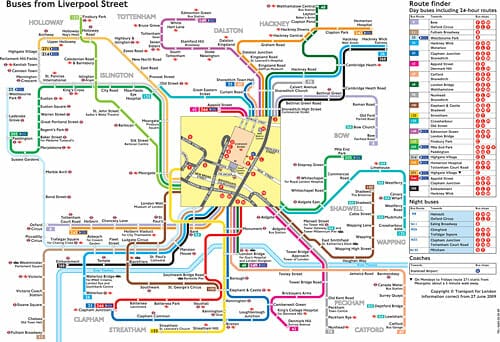
GET A FREE LONDON INTRO GUIDE and ACCESS TO MY FB GROUP
Start your planning with this “Intro to London” guide and access to my London planning Facebook group!
- Check out the YouTube channel for more London tips
- Using Buses in London: How to Pay for London Buses
- How Much Do London Bus Rides Cost?
- How to Get On and Get Off a London Bus
- Requesting a Stop on a London Bus
- Flagging a Bus in London
- Where Can You Sit on a London Bus?
- Standing on a London Bus
- Understanding London Bus Stops
- Understanding London Bus Routes
- Step-by-Step Guide to Take a London Bus
- Do London Buses Run at Night?
- Accessibility on London Buses
- Resources and Apps for London Bus Schedules
- GET A FREE LONDON INTRO GUIDE and ACCESS TO MY FB GROUP
- UK Travel Planning Guide: the FAQs
Hey! Want more honest UK tips and planning advice? Click here to join my London and UK Travel Tips Facebook group, where I can answer more of your questions!
Check out the YouTube channel for more London tips
Using Buses in London: How to Pay for London Buses
Paying for London buses can only happen two ways, as London buses do not take cash.

🛎 Still looking for somewhere to stay in London?
My favorite hotel in London for all visitors is the Strand Palace (click here to check prices).
⭐⭐⭐⭐
Contactless Debit or Credit Card

If you have a credit or debit card that is contactless, ie, you don’t need to use a PIN for it and can instead just “tap” it, then you can use this to pay on a London bus.
However, each person would need their own card – you can’t use a single contactless credit card to pay for multiple journeys at one time on a London bus.
IMPORTANT: are you coming to the UK from abroad?
In case you’re reading this from outside the UK and will be a foreign visitor here, you need to know these 2 things to stay safe and save money.
- Travel insurance – you need it when going overseas! I use this site to get the best quotes and purchase my packages from. Do not skip this – having medical coverage abroad as well as other coverage in case of missed flights, lost luggage, etc is essential. As I said, I have never gone wrong using this site.
- International debit cards without fees – do not get stuck paying extortionate foreign fees when using your card abroad (and the UK is almost all card these days). I use the Wise debit and travel card which you can apply and learn more about here.
Oyster Card
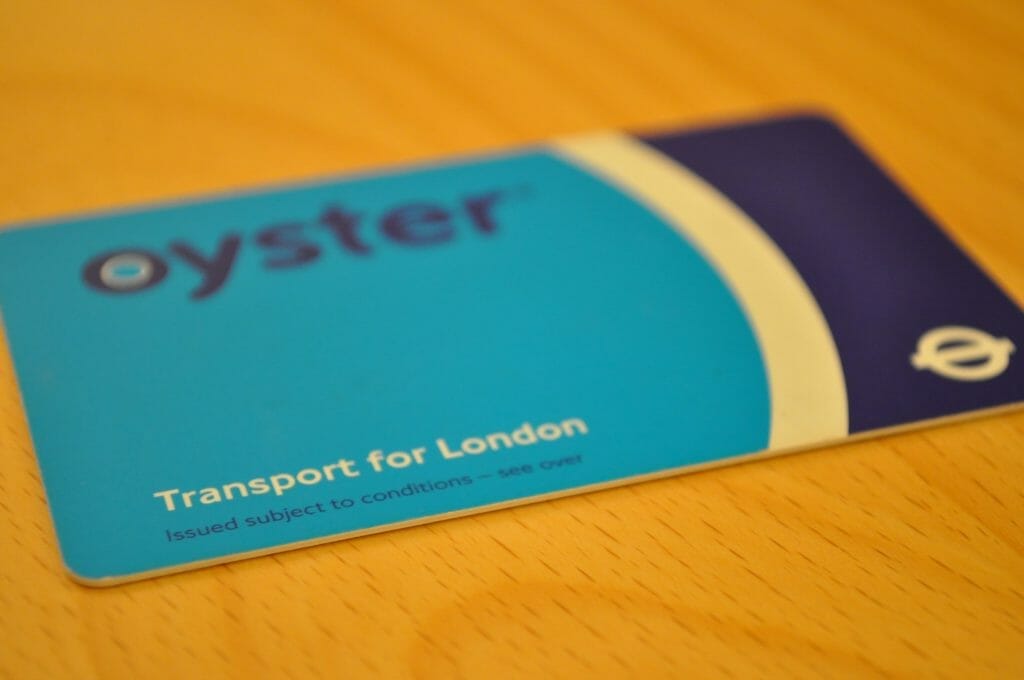
The second way to pay for a London bus is by using an Oyster card (more on Oyster cards here).
There will not usually be any sort of way to buy an Oyster card near the bus station unless it just happens to be near a tube station, so make sure you’re prepared before planning on taking the bus.

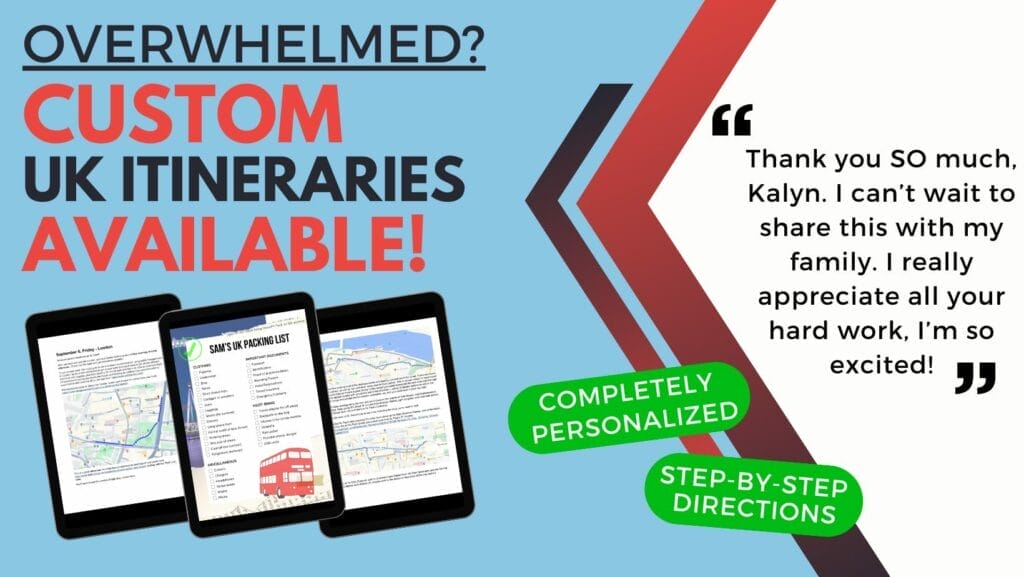
How Much Do London Bus Rides Cost?
Let’s talk prices of London buses, as London buses are cheaper than the tube and definitely worth your while if you’re trying to save a pence or two!
Single Ride Cost on London Bus
A single ride on a London bus costs £1.65, regardless of what Zone of London you are in.
However, if you take another ride within an hour of getting on the first bus (maybe you have to change buses), then you’d be eligible for the Hopper Fare which I’ll explain next.
If you take different bus journeys spaced further than an hour apart, you would pay £1.65 per each journey, until you reach the maximum daily cap (keep reading for more information on that).
Hopper Fare
The London bus Hopper Fare is automatically applied to your journey if you qualify, and to qualify, you need to tap in on another bus (or buses) within 1 hour of tapping in on the first one.
The Hopper Fare means that you still only pay £1.65 total, no matter how many buses you take within a one hour period.
All-Day Limit
If you take multiple buses within a day, spread out at different times, you will be charged the £1.65 per ride until you get to a total of £4.95 in one day.
You need to use the same contactless card or Oyster card to achieve this limit, as obviously the bus system will not know it’s still you if you use your Oyster card for one journey and then your contactless credit card for the next.
After you hit that limit, any additional bus rides that day will be free of charge within London.
Do Kids Go Free on London Buses?
Children ages 10 and under can ride with you on a London bus for free.
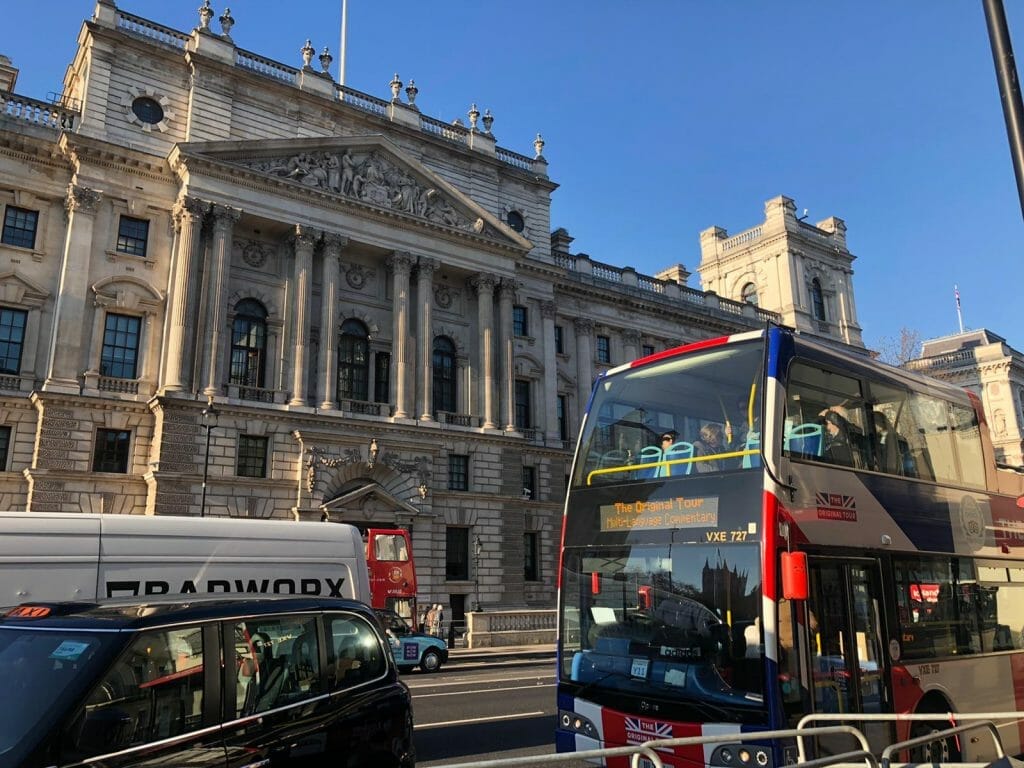
How to Get On and Get Off a London Bus

Okay, you probably know how to get on a bus: you step-on, but let’s talk about London bus etiquette and practicalities.
When you first get on the bus, get on at the front of the bus.
Both doors may open, but it’s more customary for people to exit via the back door and enter via the front door, near the driver.
There are some buses where you can also enter from the back, so if you see a lot of people doing this, then follow suit, but otherwise stick to the front.
Get on, tap your card onto the reader, and once it signals that you’re good (it will make a long beep), you can proceed onto the bus to find a seat.
You can sit upstairs or downstairs, or you may have to stand, but etiquette is, if standing room only on a bus in London, to move further back into the bus as more people will cram on along the route.
Also keep in mind if you choose to sit upstairs, that the bus may start in motion again while you’re navigating the stairs so HOLD ON TIGHT.
Most buses will have scrolling screens to tell you the next stop.
In this case, it will be easy to know when to get off.
If your bus doesn’t have that, you can try staying near the driver to see if he can alert you when you’re close or you can follow your route on bus apps using your phone (click here to learn how to use your phone in the UK from abroad).
Requesting a Stop on a London Bus
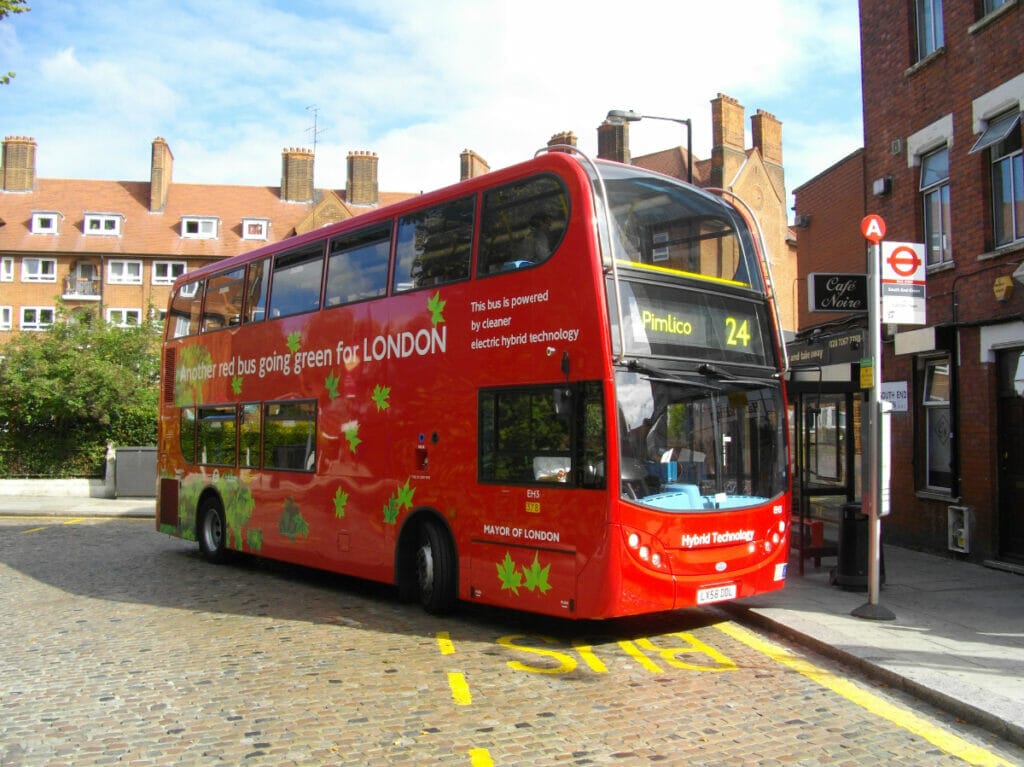
If you’re on a busy route, it’s commonplace for the bus to already be stopping at all stops, but to be sure, make sure to push the “Request stop” button (found all over the bus, usually on the rails) before your stop so the driver knows someone wants to get off.
When you get off the bus, you DO NOT need to “tap out” like you do on the tube.
Simply walk off (from the back exit).
Flagging a Bus in London
Do you have to hail buses in London?
Yes, sometimes!
It’s important to “hail” the bus if you are intending to get on it, if there aren’t already people doing that or it doesn’t seem to already be stopping.
Simply step relatively close to the road, put your hand out, and try and make eye contact with the driver to signal that you intend to get on his bus, as there are multiple buses that will go through a stop so if you’re waiting for another one, they don’t want to waste their time stopping only for you to not get on.
If you get nervous about the above “hailing” or “requesting stop” etiquette, know that the vast majority of buses you’ll take as a visitor in Central London won’t have this needed from you as they’ll be stopping anyway, but it’s good to know.
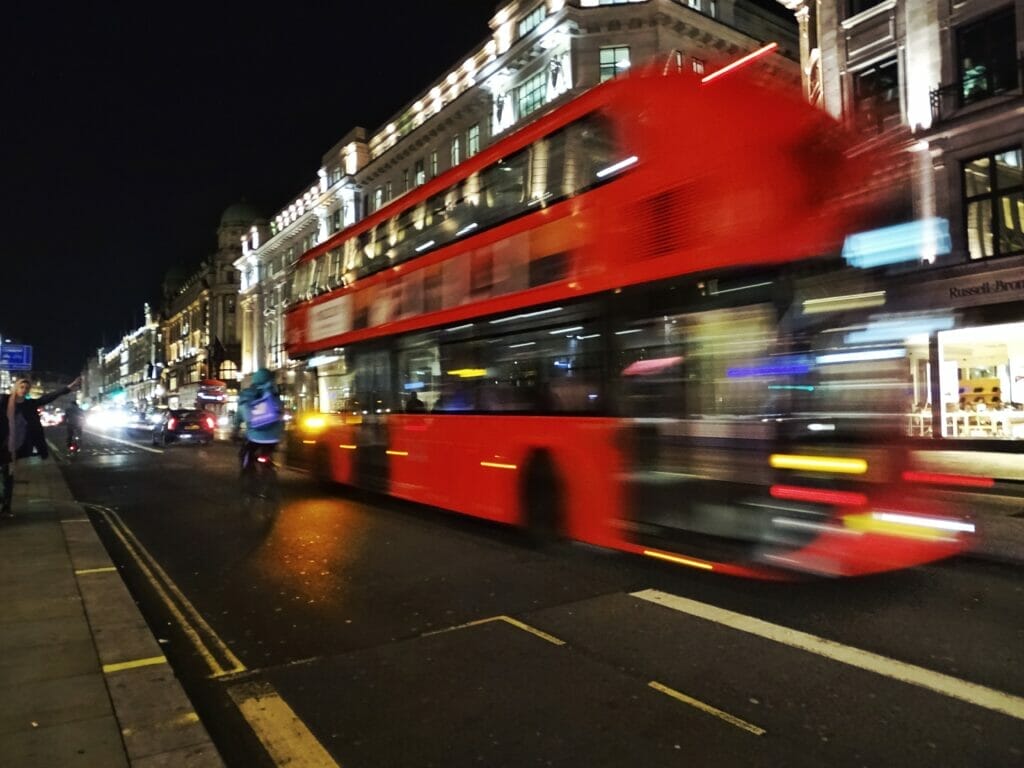
Where Can You Sit on a London Bus?
Once on the bus, you are free to sit wherever you want, whether upstairs or downstairs (go for the upstairs on a double decker bus for the experience!).
However, if you are sitting in a seat designated for people with mobility issues or extra needs (there will be a sign), make sure that you look around each time people get on the bus to make sure no one needs the seat more than you.
You can still sit there if no one is sitting there and falls into that category, however.
Standing on a London Bus
If there are no seats (and there might not be during rush hour), London bus etiquette is that you can stand on on the lower level of a London bus.
Just make sure to hold onto the handrails so as not to go flying down the aisle when the bus is moving, and stay clear of the yellow line at the front of the bus that designates that people should not stand there (typically right in front of the front door and next to the driver).
Understanding London Bus Stops

London bus stops are all marked with letters (sometimes double letters).
You’ll find the letter displayed on top of the bus stop or station, and this is helpful to know as you’ll need it to figure out where your bus might be departing from.
Most bus stops will also have a screen showing you when the next buses are due to arrive and where they’re going, as well as maps and schedules posted on signage around the stop.

Understanding London Bus Routes

The bus map of London looks really scary to a visitor, but most people don’t use the bus map like they would use a tube map, as it’s too convuluted.
Instead, let’s talk about individual routes.
Each route has a number attached to it, so, for instance, the “55”, and this will run two ways.
There will be a 55 bus going in one direction on the route, and another going the opposite direction.
They are on the same bus route, but if you get on one going in the opposite direction, you’ll add a lot of time and confusion to your day.
The good part is that you’ll avoid having this problem as long as you make sure the bus stop you need matches the letter on the top of your bus stop, because that means the 55 bus that goes in the opposite direction will be going from a stop on the other side of the street (that you are not at, so you can’t get on it!)
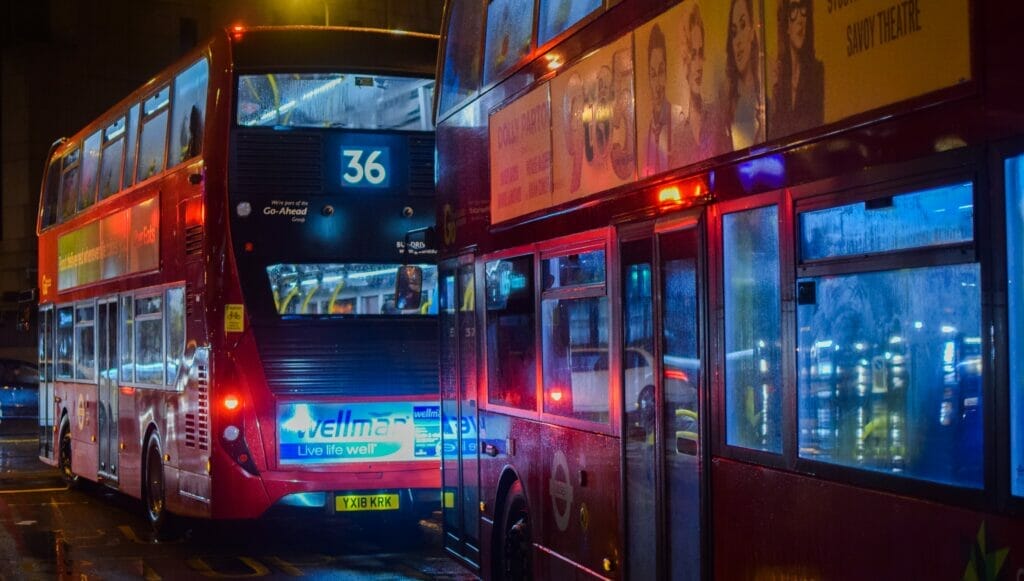
Step-by-Step Guide to Take a London Bus
Let’s talk about how this works step-by-step.
I’ll have some resources below on some great bus schedule apps, but I usually just use Google directions, set to public transportation.
Let’s say I look up how to get from the British Museum to Oxford Circus Station, and I see this.

On the bus section, you’ll see it wants me to take the 55 bus from Museum Street to Great Titchfield Street. Museum Street is Stop C, so as I walk in the direction it tells me, I’m looking for a bus stop that says “C” on top.
I might find more bus stops ON Museum Street, but I want Stop C specifically.
At Stop C, I’ll keep an eye out for when a bus that says “55 Towards Oxford Circus” on front arrives.
If it only says “55,” I’ll ask the driver, just to be sure, ” is this the bus that stops at Great Titchfield Street”?
Then, on the bus, I’ll keep an eye out for the scrolling screen telling me that the next stop is Great Titchfield Street (it won’t say the letter on the bus stop), and when it’s my stop, I’ll press the button, get off when the bus stops without “tapping out,” and wallah!
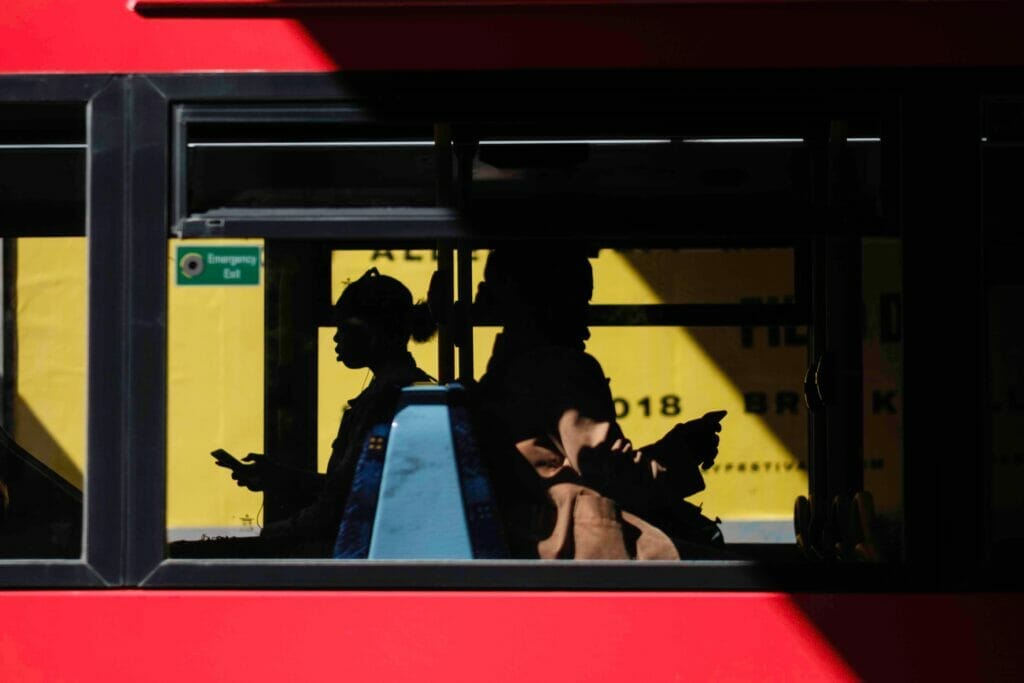
Do London Buses Run at Night?
Some London buses are 24 hours, or only run at night called “night buses.”
These will follow the same types of rules as other buses, including route numbers.
Accessibility on London Buses

London buses are designed to be able to accommodate those with accessibility limitations, including being able to get down to street level so a wheelchair or mobility impaired person can get on much easier.
There is also wheelchair space in the middle of the bus, which everyone else will clear out of if you get on with a wheelchair or scooter and need that section.
Resources and Apps for London Bus Schedules
Nowadays, almost everyone, including Londoners, is getting bus information off of their phones rather than looking at a paper map.
I often use Google Maps, set to “Public Transportation,” or I recommend an app called CityMapper, which is one of the best apps to download for London.
Want more London travel guides? Check these out!
- The Definitive London Packing List for Visitors
- A Full Guide to Oyster Cards in London for Dummies
- Getting around London: Everything a Visitor Needs to Know
- Weather in London: a Visitor’s Guide
- The Best Time to Visit London: a Local’s Guide
- London on a Budget: How to Save Money in London
- Money in the UK: How to Pay for Things in London
- Exactly How Many Days to Spend in London: an Expert Guide
- How to Use the Tube in London: a Guide for Newbies
- What to Wear in London (How to Dress Like a Londoner)
- British Pub Etiquette: the must-read guide
- 49+ Expert London Travel Tips
- Visiting London with Anxiety: the ultimate guide
UK Travel Planning Guide: the FAQs
🏥 Should I buy UK travel insurance?
Absolutely yes. Basic coverage is not expensive, and as a visitor you are NOT covered under the NHS. Compare policies and prices with Travel Insurance Master here, a big name in the travel insurance business, and cross that off your list.
🔌 Do I need travel adapters for the UK?
Yes, you do, otherwise you won’t be able to plug in your electronics/phone/lifelines. I recommend this one, which is all-in-one so you can use it in other countries.
🚗 What do I need to drive in the UK?
The first thing you need to check out if you’re planning on renting a car in the UK is this guide to driving in the UK for visitors – the roads, signs, and driving experience will likely not be what you’re used to and it’s essential to prepare yourself to stay safe and aware.
🛌 What’s the best way to book hotels in the UK?
For UK hotels, Booking is the best site as it offers free cancellation on many properties. If you want an apartment, I always recommend VRBO over AirBnb.
📳 Will my phone work in the UK?
Yes – if you set it up right. Check out my guide on making your foreign phone work in the UK to ensure that you get the type of service you need.
🚿 Can I drink the water in the UK?
Yes, UK water is great and perfectly safe. But drink out of taps in any kitchen or use water fountains. Double check before drinking out of the taps in hotel bathrooms, though, as they may be on a different system. London water is safe to drink.

I just returned from London and I thought the bus system was very complicated to pickup in the few days I was there but I have to say Londoners were always very generous with time and explanations if asked. It probably didn’t help that there were plenty of diversions going on because of the queue when the Queen died. The only way we knew we were being diverted was when we saw signs that said “diversion” and the bus turned that way. My general impression is that the transportation service assumed that passengers just “knew” stuff. Your explanations were quite helpful but a little late for us. I will be following since I would like to return sometime! Keep the info coming. Your site did help us with figuring out some of the places we didn’t want to go- especially when time is limited.